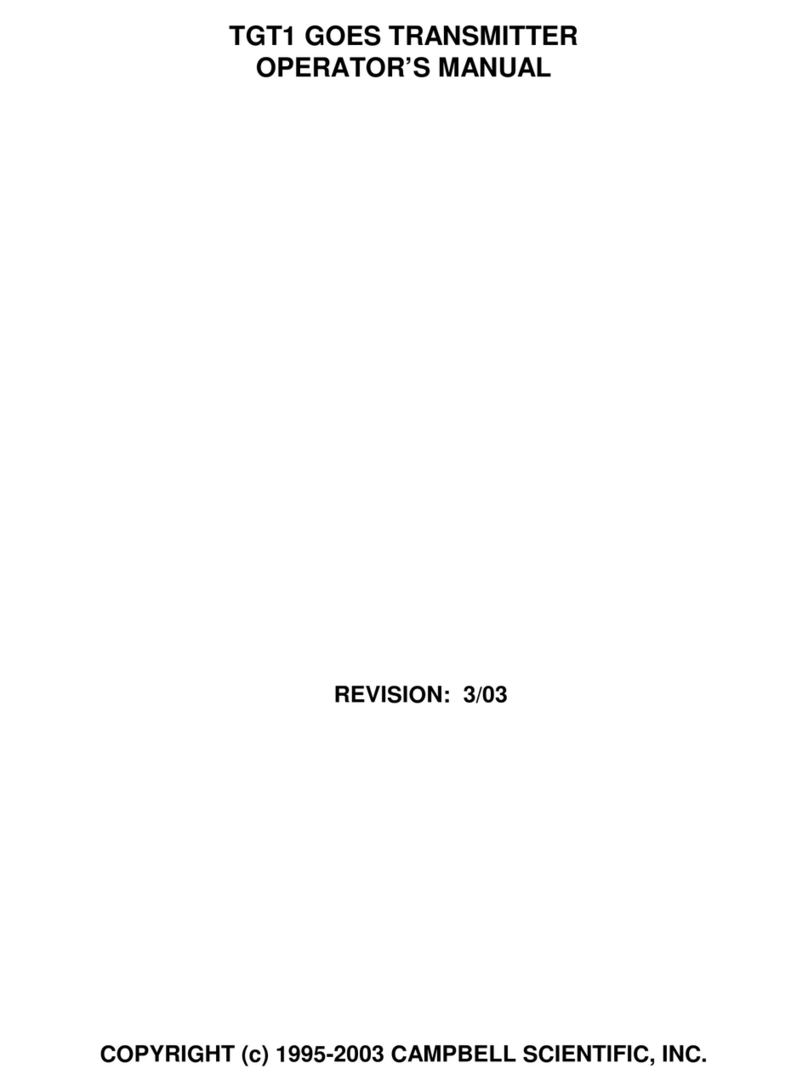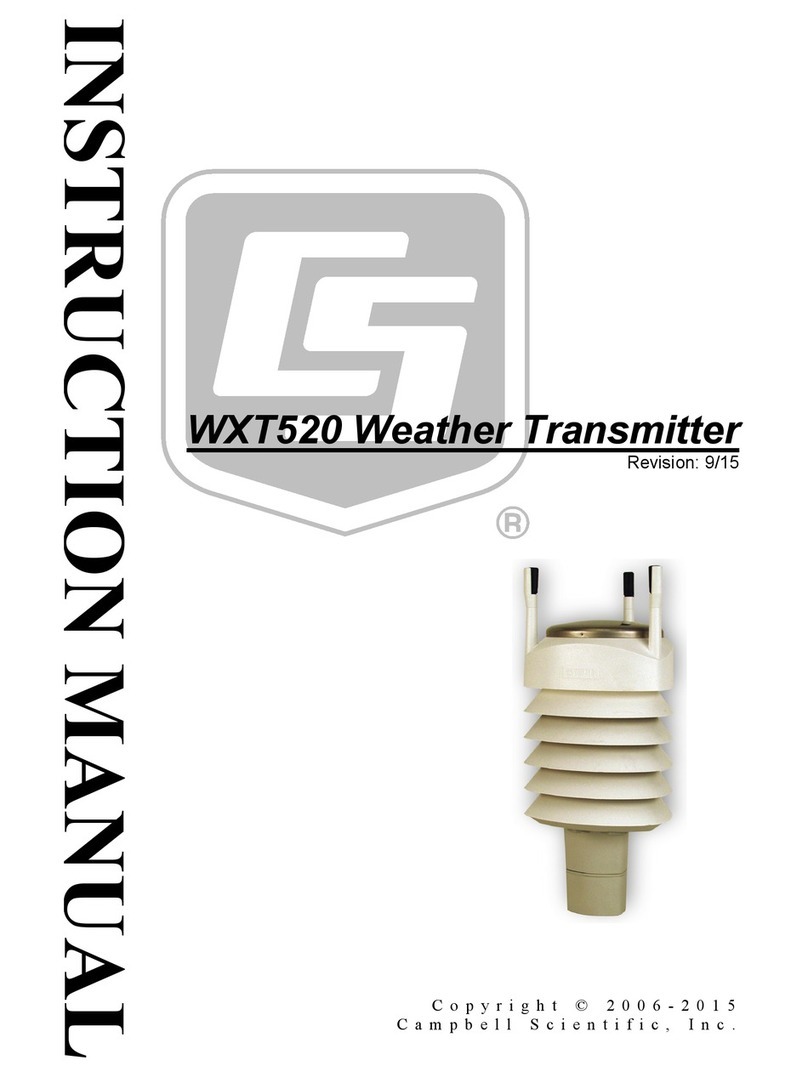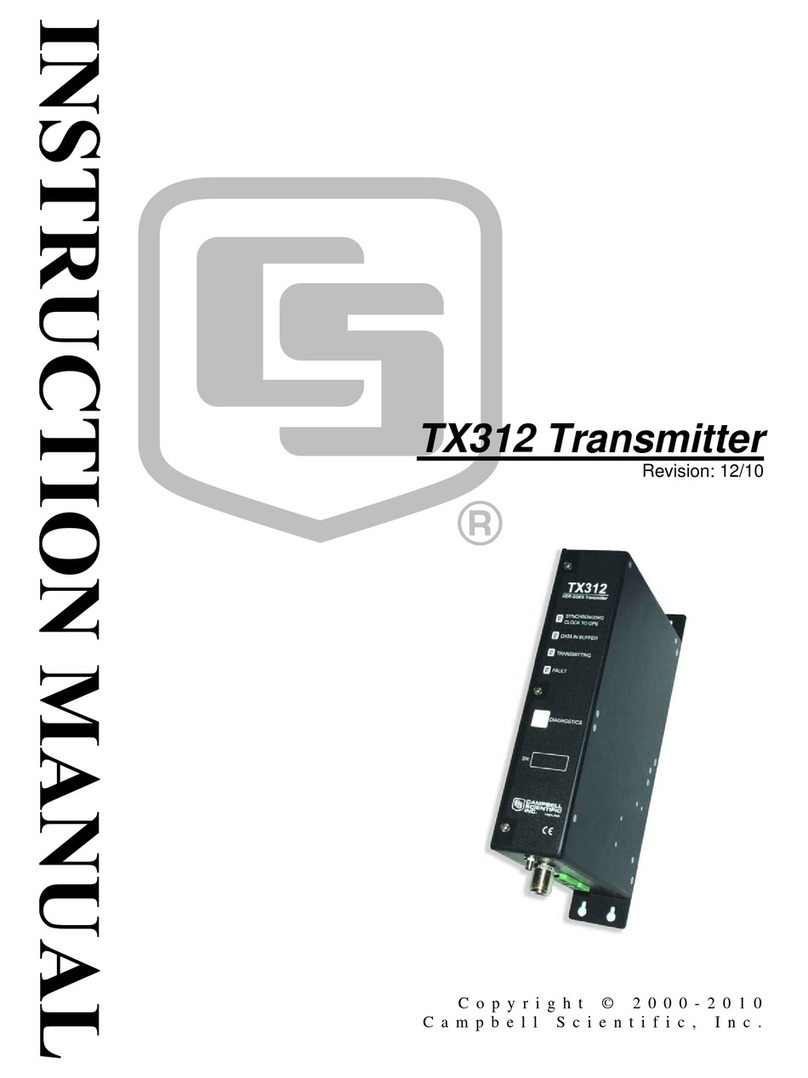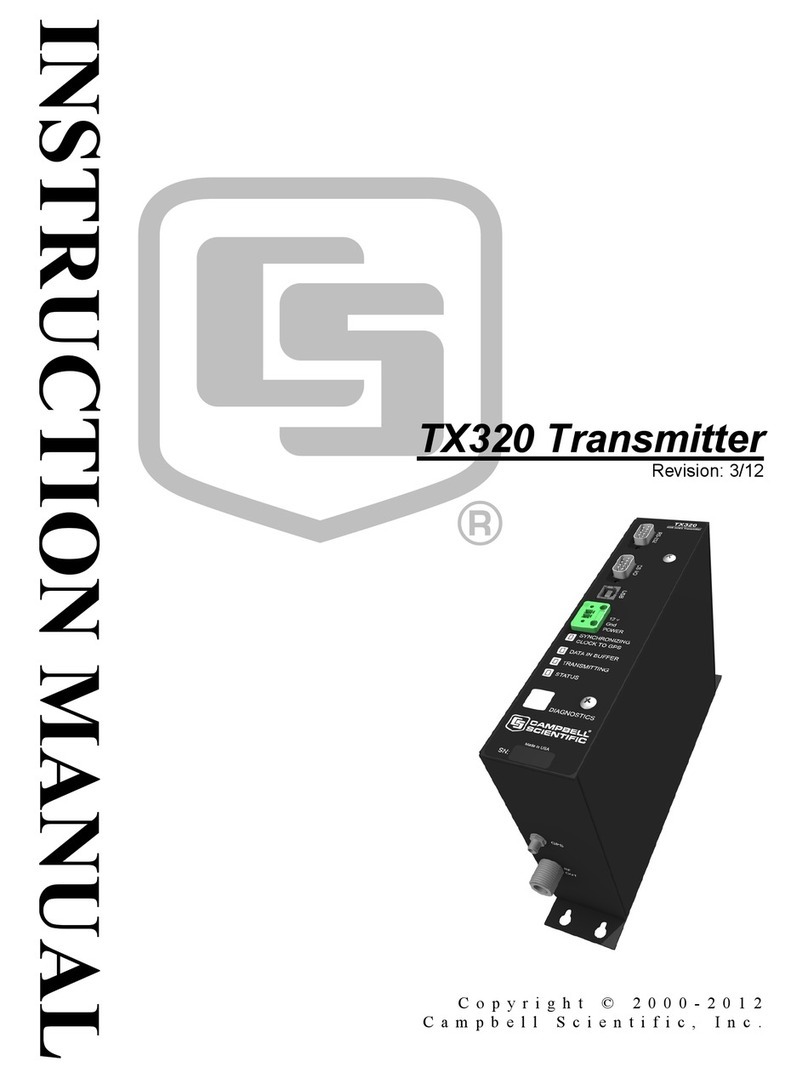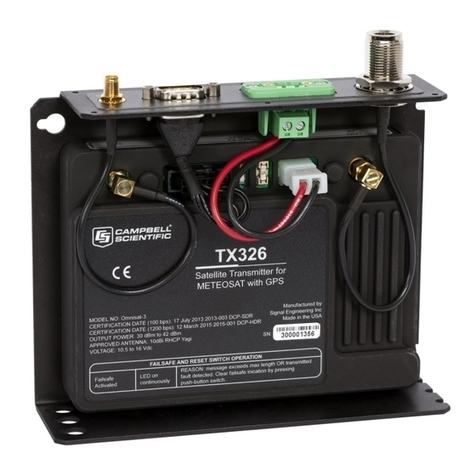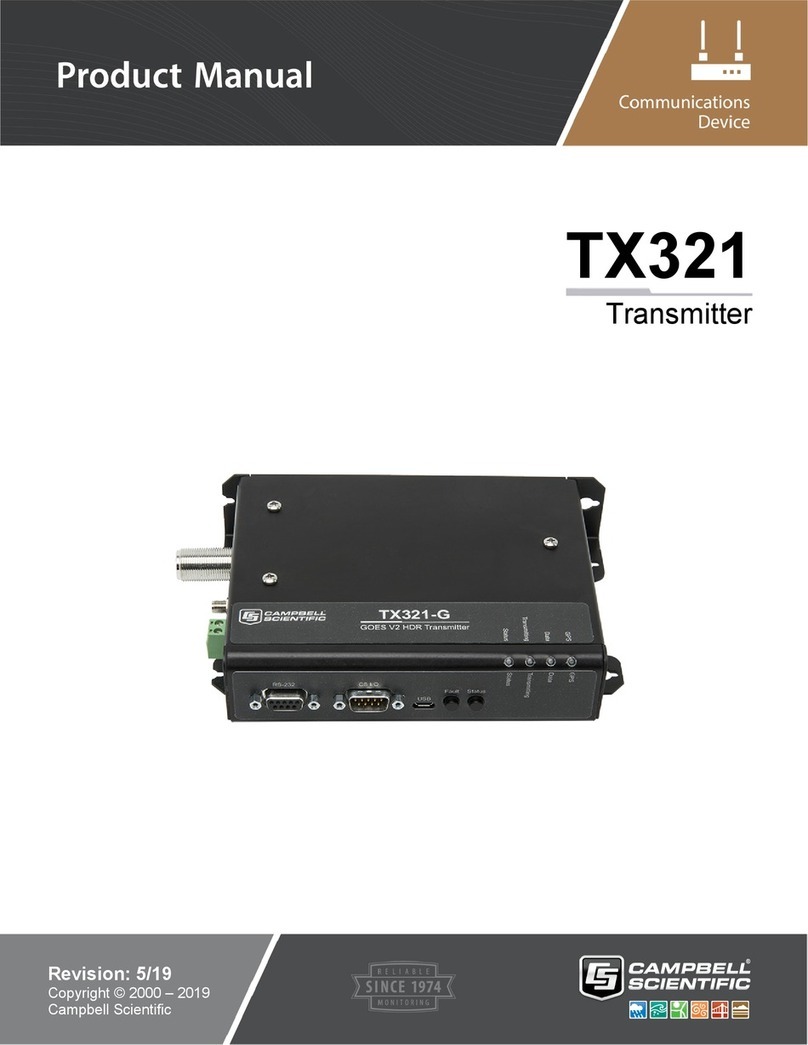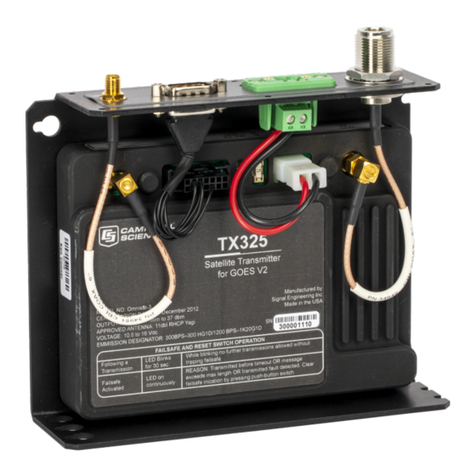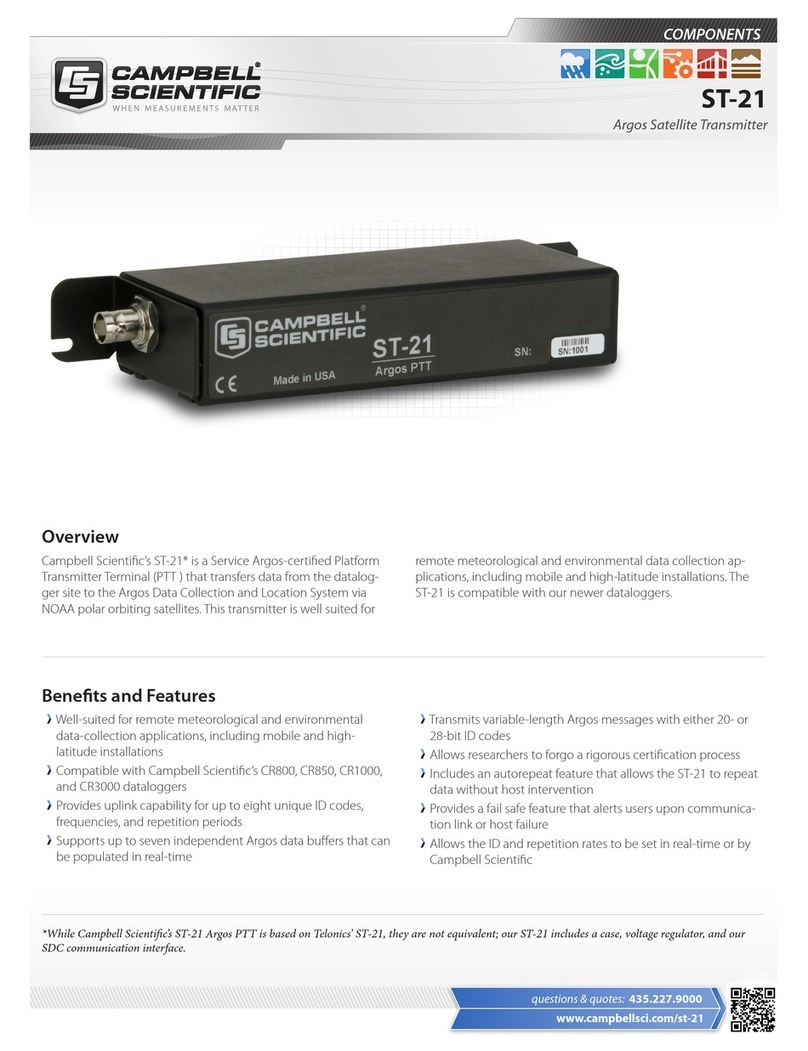
i
Contents
PDF viewers: These page numbers refer to the printed version of this document. Use the
PDF reader bookmarks tab for links to specific sections.
1. Overview......................................................................1
1.1 Specifications.........................................................................................1
1.2 Serial Port...............................................................................................1
1.3 Data Buffers ...........................................................................................2
1.4 Multiple Argos ID Numbers..................................................................2
1.5 One Argos ID Number...........................................................................3
2. Datalogger Programming...........................................3
2.1 Argos Setup............................................................................................3
2.1.1 Result Code.....................................................................................3
2.1.2 Buffer Number................................................................................3
2.1.3 Decimal ID Number .......................................................................3
2.1.4 Frequency........................................................................................3
2.2 ArgosData...............................................................................................3
2.2.1 General Description........................................................................4
2.2.2 ResultCode......................................................................................4
2.2.3 ST21Buffer .....................................................................................4
2.2.4 DataTable........................................................................................4
2.2.5 NumRecords ...................................................................................4
2.2.6 DataFormat .....................................................................................4
2.3 ArgosDataRepeat ...................................................................................4
2.3.1 Result Code.....................................................................................5
2.3.2 Repetition Rate ...............................................................................5
2.3.3 Number Repeats..............................................................................5
2.3.4 Buffer Number................................................................................5
2.4 ArgosTransmit........................................................................................5
2.4.1 Result Code.....................................................................................5
2.4.2 Buffer Number................................................................................5
2.5 ArgosError (Error as string)...................................................................6
2.5.1 ErrorCodes......................................................................................6
3. ST-21 Installation........................................................6
3.1 BNC Antenna Connector and Antenna ...................................................6
3.2 Environmental Enclosure.........................................................................7
4. Satellite Orbit Patterns...............................................7
5. Antenna Placement ....................................................8
